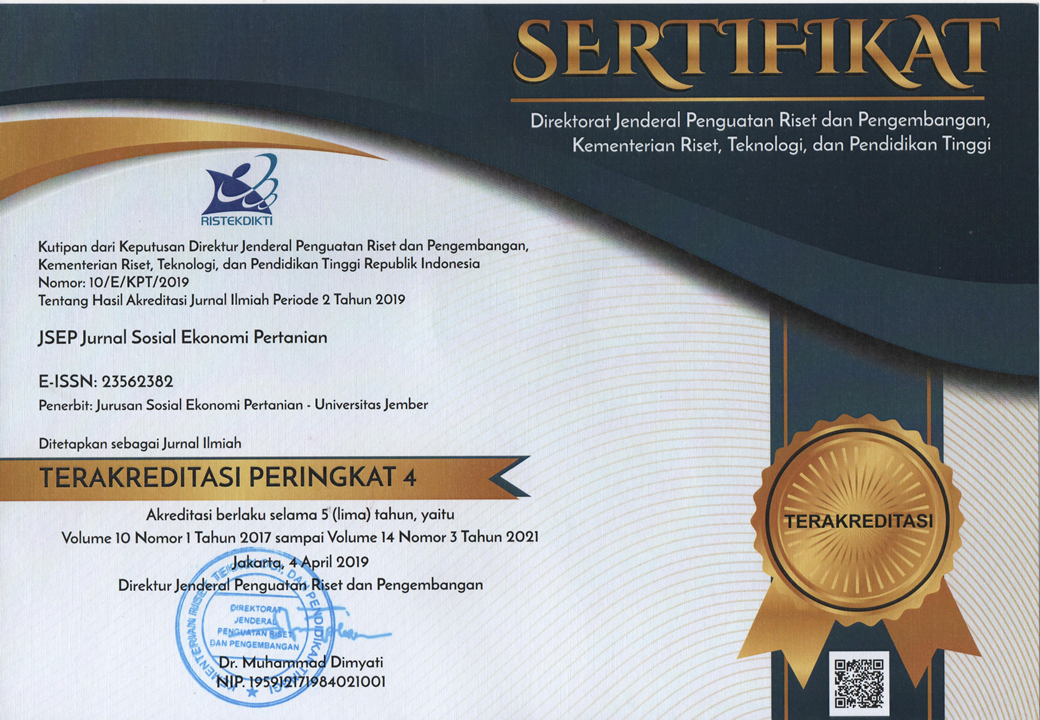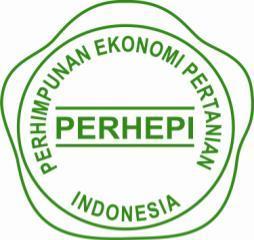KETERSEDIAAN PANGAN POKOK PADA RUMAH TANGGA PETANI PADI SAWAH IRIGASI DAN TADAH HUJAN DI KABUPATEN KARANGANYAR
Abstract
This study aims to determine the supply pattern of staple food , the availability of staple food, and energy avaibility from staple foods on the irrigated and rainfed rice farmers household in Karanganyar Regency. Samples totaling 150 rice farming households consisting of 90 irrigated rice farmers households and 60 rainfed rice farmers households in four districts ( Karanganyar, Gondangrejo, Jaten, and Jatipuro District ) in the Karanganyar Regency. Data used include the primary and secondary data. Data were analyzed descriptively. The results showed that the supply pattern of staple food on rice farmer households in Karanganyar is from production itself and production itself plus of purchase. Average of staple food avaibility on irrigated rice farmer household was 64.75 Kg per month and 65.05 kg per month on rainfed rice farmers household. Average availability of energy from staple food on irrigated rice farmers household was 2516.69 kcal / person / day and on the rainfed rice farmer households was3584.53kcal/person/day.
Keywords: Availability, staple food, energy, Karanganyar Regency
Jurnal Sosial Ekonomi Pertanian (J-SEP) has CC-BY-SA or an equivalent license as the optimal license for the publication, distribution, use, and reuse of scholarly work.
The work is simultaneously licensed under a Creative Commons Attribution-ShareAlike 4.0 International License, which permits others to share the work with an acknowledgement of the authorship and the work's initial publication in this journal. Authors who publish with this journal retain their copyright and grant the journal the right of first publication.

3.png)






.png)













